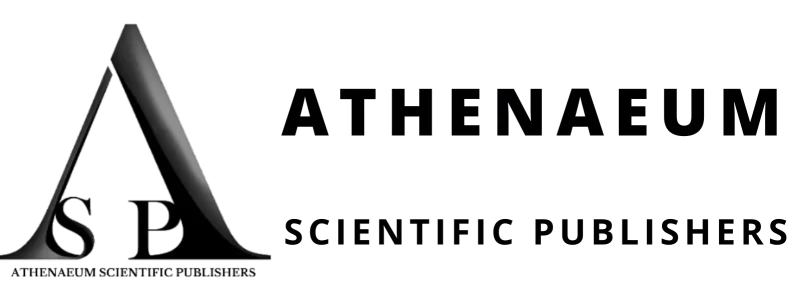Michinobu Ohno1*, Miwako Nakano1, Endo Masao1, Fumiko Yoshida1, Rie Irie1
1Department of Pediatric Surgery, Saitama City Hospital, Japan
*Corresponding Author: Michinobu Ohno, Department of Pediatric Surgery, Saitama City Hospital, 2460, Mimuro, Midori-ku, Saitama-shi, Saitama 336-8522, Japan; Email: [email protected]
Published Date: 27-08-2021
Copyright© 2021 by Ohno M, et al. All rights reserved. This is an open access article distributed under the terms of the Creative Commons Attribution License, which permits unrestricted use, distribution, and reproduction in any medium, provided the original author and source are credited.
Abstract
A rare case of congenital intestinal atresia associated with Hirschsprung disease was reported. A 0-day-old boy who was diagnosed to have intestinal atresia and he underwent intestinal anastomosis. The movement of the intestinal tract was slow after surgery. The abdominal distension is getting stronger.
The radiograph and contrast enema revealed the possibility of Hirschsprung disease. The biopsy of rectum also revealed aganglionosis. Transverse colostomy was performed on the 145th days after surgery of ileal atresia. The radical surgery for laparotomy-assisted trans anal pull-through technique was performed on the 376th days after first surgery. Discussion was made as to its pathogenesis and timing of surgery.
Keywords
Intestinal Atresia; Hirschsprung’s Disease; Aganglionosis; Comorbidity; Infant
Introduction
It is extremely rare for one patient to have intestinal atresia and Hirschsprung’s disease at the same time. We reported such a rare case with some consideration.
Case Report
The 29-week gestation, 1078 g first male infant of monoamniotic‐monochorionic twins was born to a 28-years-old-mother. Delivery is cesarean section. The prenatal history was no remarkable. Apgar score is 7/8, the patient was ventilated immediately.
A supine radiograph was shown double bubble sigh and a barium enema was shown micro colon (Fig. 1). The baby underwent surgery at one day of age and type I (Grosfeld classification) jejunal atresia were detected at laparotomy (Fig. 2). Jejunum anastomosis was performed, and no other abnormal findings of the intestinal tract were observed.
The movement of the intestinal tract was slow after surgery. On the 12 days after the operation, a contrast examination confirmed that intestinal movement to the distal intestinal tract might be good, and milk was started.
The 33 days after the operation, the abdominal distension is getting stronger. Dilation of the lower intestinal tract began to be seen in radiograph around 48 days after the operation (Fig. 3). A close examination should have been planned, but CRP elevation and blood culture showed gram-negative bacillus infection, which caused meningitis and catheter infection. Waiting for the general condition to improve, a rectal mucosa biopsy was performed 104 days after the operation. Acetylcholinesterase staining-positive nerve fiber hyperplasia was moderately observed and suggested Hirschsprung’s disease. On the 124 days after the operation, an enema examination revealed a caliber change at the sigmoid-descending colon junction (Fig. 3). Transverse colostomy was performed on the 145 days after first surgery (Fig. 4). Pathological findings showed ganglion cells are absent between the muscle layers in sigmoid colon.
Patient The patient had a good course and underwent radical surgery for laparotomy-assisted trans anal pull-through technique on the 376 days after first surgery. Pathological findings revealed no ganglion cells from the descending colon to the rectum.
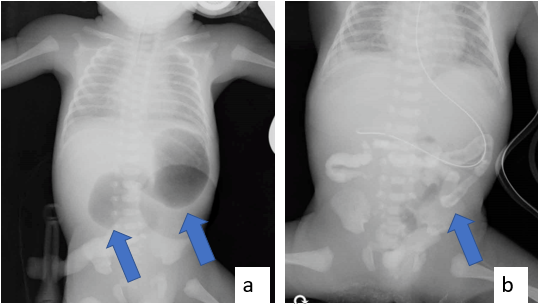
Figure 1: The supine radiograph before surgery of ileal atresia. (a): A supine radiograph was shown double bubble sigh (arrow); (b): Enema examination was shown micro colon (arrow).
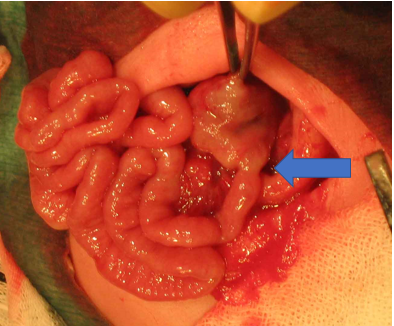
Figure 2: Operative findings of ileal atresia. Type 1 of ileal atresia was presence (arrow).
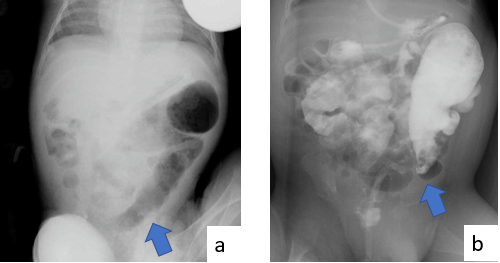
Figure 3: The radiograph and contrast enema before surgery of Hirschsprung disease. (a): Dilation of sigmoid colon (arrow); (b): Caliber change showed rectosigmoid type of Hirschsprung disease (arrow).
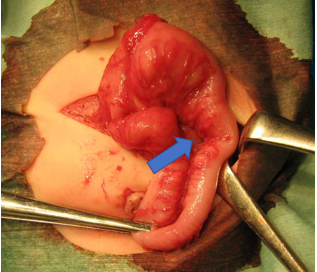
Figure 4: Operative findings of Hirschsprung disease. Caliber change was presence (arrow).
Discussion
There are few case reports of Hirschsprung’s disease and intestinal atresia. The comorbidity rate of this disease was 0.2% and the most commonly observed types of Hirschsprung’s disease were total colon aganglionosis or extensive aganglionosis [1-9].
There are several theories about the combined pathology of intestinal or colonic atresia and Hirschsprung’s disease as follows [2-7]:
- Volvulus, intussusception, strangulation intestinal obstruction, or some reason of intestinal atresia occur in the uterus and then the migration of neural crest cells is impaired
- Long segment type of Hirschsprung’s disease exists first and meconium accumulates on the oral side of the segment. The meconium retention cause volvulus in the uterus and then resulted intestinal atresia
- Ischemia of blood vessels to the intestine in the uterus cause intestinal atresia and malposition of the colon, which disturb the migration of neural crest cells. The true etiology is still unknown.
The problem is too late to detect Hirschsprung’s disease after intestinal atresia or colonic atresia [8]. As for our case, the diagnosis was made the 117 days after jejunum anastomosis, the colostomy was constructed on the 145 days after surgery, and the radical surgery was performed on the 376 days after first surgery. In addition, the palliative operations leading to radical surgery are numerous. According to the cases reported for intestinal atresia or colonic atresia with Hirschsprung’s disease, the average time from intestinal anastomosis to the presence of Hirschsprung’s disease is 8 months (range from 1 week to 5 years after first surgery of intestinal atresia), and the average number of operations is 4.4 (range form 2-9 procedures) [4]. Our case underwent a total of 3 operations. In all cases, it was difficult to diagnose Hirschsprung’s disease at the same time as diagnosing intestinal atresia, because surgery was required immediately after birth for intestinal atresia.
Santos LP, et al., suggested an early rectal suction biopsy should be undertaken to detect the rare combination of Hirschsprung’s disease and ileal atresia [9]. Kimble RM, et al. reported the relative frequencies of associated anomalies in babies with different types of gut atresia [10]. They recommended a sweat test should be obtained in the patient with jejunal atresia because cystic fibrosis was present in 6 cases of the 35 babies with jejunal atresia. They did not recommend a rectal biopsy because of no baby with jejunal atresia and Hirschsprung’s disease in all cases. Had we had an early rectal biopsy, the time to radical surgery would have been shorter. However, the number of surgeries might not have changed.
As Hirschsprung’s disease is a highly heritable neurocristopathy, many genetic variations in these patients were reported [11,12]. Especially, Rearranged during Transfection (RET) mutations are associated with long segment type of Hirschsprung’s disease. In our case, no genetic testing has been done for the request of the parents.
Conclusion
If patient has prolonged vomiting or abdominal distension after surgery of intestinal atresia, the possibility of the presence of Hirschsprung’s disease should be considered.
References
- Ikeda K, Goto S. Diagnosis and treatment of Hirschsprung’s disease in Japan. An analysis of 1628 patients. Ann Surg. 1984;199:400-5.
- Jean PC, Shondell MB, Marie EP, Lori RL, Marshall Z, Rajeev P, et al. Terminal ileal atresia, total colonic aganglionosis, and thrombophilia. Pediatr Dev Pathol. 2009;12(5):394-7.
- Gauderer WL, Rothstein FC, Izant Jr RJ. Heal atresia with long-segment Hirschsprung’s disease in a neonate. J Pediatr Surg. 1984;19(1):15-17.
- Draus Jr JM, Maxfield CM, Bond SJ. Hirschsprung’s disease in an infant with colonic atresia and normal fixation of the distal colon. J Pediatr Surg. 2007;42(2):E5-8
- Currie AB, Hemalatha AH, Doraiswamy NV, Cox SA. Colonic atresia associated with Hirschsprung’s disease. J R Coll Surg Edinb. 1983;28(1):31-4.
- Okamoto E, Ueda T. Embryogenesis of intramural ganglia of the gut and its relation to Hirschsprung’s disease. J Pediatr Surg. 1967;2:437-44.
- Hyde GAJ, De Lorimier AA: Colon atresia and Hirschsprung’s disease. Surg. 1968;64:976-8.
- Haffner JE, Schistad G. Atresia of the colon combined with Hirschsprung’s disease. A case report. J Pediatr Surg. 1969;4:560-2.
- Santos LP, Coimbra D, Cunha C, Lopes MF. Oesophageal atresia with tracheo-oesophageal fistula, ileal atresia and Hirschsprung’s disease: outcome of a rare phenotype. BMJ Case Rep. 2019;12:e226675.
- Kimble RM, Harding J, Kolbe A. Additional congenital anomalies in babies with gut atresia or stenosis: when to investigate, and which investigation. Pediatr Surg Int. 1997;12:565-70.
- Schierz IAM, Cimador M, Giuffrè M, Aiello CM, Antona V, Corsello G, et al. Total colonic aganglionosis and cleft palate in a newborn with Janus-cysteine 618 mutation of RET proto-oncogene: A case report. Ital J Pediatr. 2020;46:135.
- Lai FP, Lau ST, Wong JK, Gui H, Wang RX, Zhou T, et al. Correction of Hirschsprung-associated mutations in human induced pluripotent stem cells via clustered regularly interspaced short palindromic repeats/cas9, restores neural crest cell function. Gastroenterol. 2017;153:139-53.
Article Type
Case Report
Publication History
Received Date: 31-07-2021
Accepted Date: 20-08-2021
Published Date: 27-08-2021
Copyright© 2021 by Ohno M, et al. All rights reserved. This is an open access article distributed under the terms of the Creative Commons Attribution License, which permits unrestricted use, distribution, and reproduction in any medium, provided the original author and source are credited.
Citation: Ohno M, et al. Jejunal Atresia with Hirschsprung’s Disease: A Case Report. J Reg Med Biol Res. 2021;2(2):1-6.

Figure 1: The supine radiograph before surgery of ileal atresia. (a): A supine radiograph was shown double bubble sigh (arrow); (b): Enema examination was shown micro colon (arrow).

Figure 2: Operative findings of ileal atresia. Type 1 of ileal atresia was presence (arrow).

Figure 3: The radiograph and contrast enema before surgery of Hirschsprung disease. (a): Dilation of sigmoid colon (arrow); (b): Caliber change showed rectosigmoid type of Hirschsprung disease (arrow).

Figure 4: Operative findings of Hirschsprung disease. Caliber change was presence (arrow).
